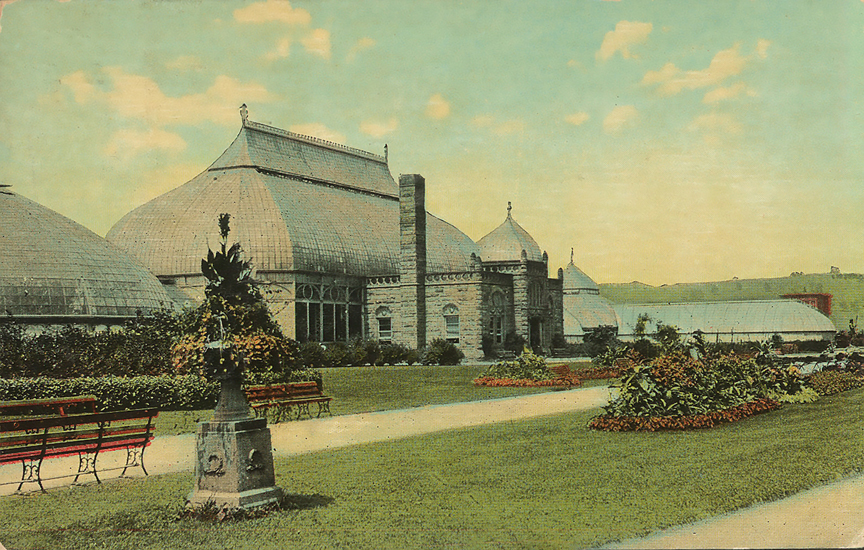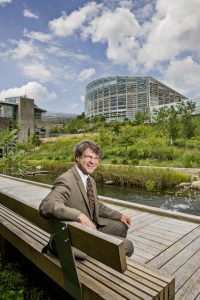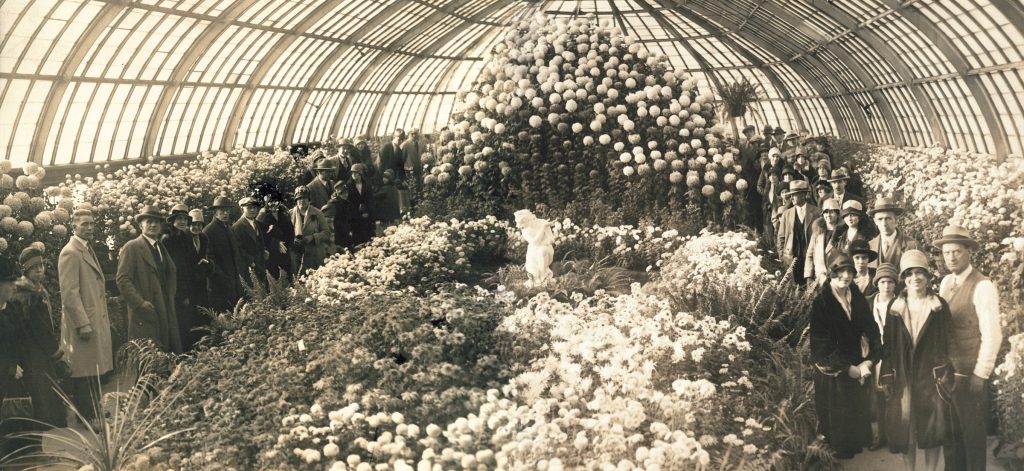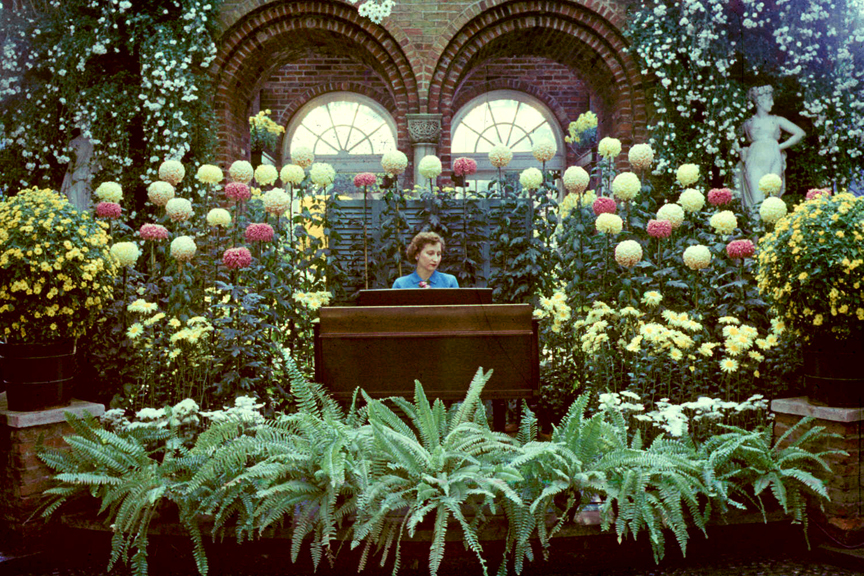As Phipps turns 125, here’s a look at the history of Pittsburgh’s conservatory
Posted on: January 3, 2019 | Written By: Doug Oster |
It was a gentlemen’s agreement between Andrew Carnegie and Henry Phipps that formed the genesis of Phipps Conservatory and Botanical Gardens. The conservatory is celebrating 125 years as a showcase for horticulture.
“Andrew said he would build the libraries if Henry would build a conservatory,” says Phipps president and CEO Richard Piacentini.

A view of Phipps Conservatory during the late 1800’s. Courtesy Phipps Conservatory

Richard Piacentini is president and CEO of Phipps Conservatory and Botanical Garden. He sat down to cover the history of the conservatory as it reaches 125 years old. Photo by David Aschkenas
In 1889, $100,000 was earmarked for the project, and construction started in 1892 with the first nine rooms opening on Dec. 7, 1893.
“It was a way for them to give back to the community,” Piacentini added.
The prestigious firm of Lord & Burnham of Irvington on the Hudson designed and built the conservatory.
“One of the things that Henry Phipps insisted on was the conservatory had to be open on Sunday,” Piacentini added, “because that was the only day people had off. That was sort of sacrilege to a lot of the people in the religious community.”
Early days
The first plants, many of them large palms, came by train from the 1893 World’s Columbian Exposition, a world’s fair in Chicago, and are still on display today.
A year later, what’s known now as the South Conservatory, the Gallery and the Fruit and Spice Room were added. In 1901, Botany Hall was funded, making Phipps the first teaching conservatory in the country.
“It was specifically designed to do botany classes for high school students,” Piacentini says.
Years later, in the early 2000s, demolition crews uncovered the original rows of tiered seating that had been converted to offices by the City of Pittsburgh, which ran the conservatory until 1993. The original renovation called for converting the hall into a multipurpose room, but that move was scrapped when the original floor plan and vaulted ceiling were discovered.

The Fall Flower Show at Phipps in 1929. Courtesy Phipps Conservatory
In 1902, Henry Phipps commissioned the Cactus House, now called the Desert Room.
In February of 1937, a storm damaged the glasshouse and almost destroyed the outside arch (called an ogee) of the Palm Court. It had to be removed. Last year in celebration of the historic anniversary, a new ogee was installed.

The Fall Flower Show at Phipps in 1907. Courtesy Phipps Conservatory
From 1967 through the 1990s, there were changes to the entranceway, the first docents were trained, a new Japanese garden was installed, the conservatory became a privately managed nonprofit, and it continued to grow.
During this time, the conservatory was more of a horticultural showcase, Piacentini says. There were two shows a year, which eventually grew to three. The collection of palms, desert plants, ferns and orchids remained the same, but most other rooms changed. Back then it was more expensive to visit during one of the shows.

The Palm Court was the scene for some music during the 1951 Fall Flower Show at Phipps. Courtesy of Phipps Conservatory
“We had very little attendance during non-show times,” Piacentini recalls. “Particularly during the summer, it was pretty deserted here.”
That’s when the whole philosophy of the way Phipps does shows changed.
Changing philosophy
“We started this program, ‘There’s always something blooming at Phipps,’” he says. “We’re going to make sure no matter what time of year you’re going to come here, we’re going to make sure it really looks good.”
In the new order, visitors were able to see the rooms as they were transformed for the next seasonal show.
“It worked. We found that people actually liked coming to see the installation,” Piacentini says proudly. “You’d come into the room one day, everything’s torn out. The next day they were installing the infrastructure, then the plants. It was really interesting to see the progression of changes. It actually turned into, you might even say, an exhibit in itself,” he adds of the changeout.
The statue of Neptune (the Roman god of the sea) originally stood over the pond at Phipps when dedicated. It was moved to Highland Park and then into storage where it was found, incredulously painted silver, and then renovated in 1996. It now stands guard outdoors in the Aquatic Gardens showing its natural patina.
Greener future
Everything changed again in 2005 for the conservatory, starting by working toward building a LEED certified Welcome Center. Inspired by the process, Piacentini and his team realized everything done at the conservatory — from the cafe to the way plants were grown — could be done sustainably or even better.
“It’s completely energized us and energized our board,” Piacetini says. “We’re not just sustaining, we’re regenerating, we’re making things better I think it’s really helped solidify our future.”
For more than a century, Phipps has been Pittsburgh’s plant haven. Moving forward, the conservatory has grown into a world-renowned, environmental leader.
“When you think about it, we opened in 1893, built at a time when people thought we were going conquer nature, that there was no limit to resources we could use or pollution we produce,” Piacintini says. “To now building some of the greenest buildings in the world. We have to transform, just like Pittsburgh’s transformed itself. We have to rethink about how we live and try to figure out how to live in harmony with nature and the rest of the world.”
Doug Oster is editor of Everybody Gardens, a website operated by 535Media, LLC. Reach him at 412-965-3278 or doster@535mediallc.com. See other stories, videos, blogs, tips and more at everybodygardens.com.
Details: phipps.conservatory.org
More about Phipps from Everybody Gardens
Phipps is a world leader in sustainability.
CMU collaborates with Phipps on innovative coldframe project.